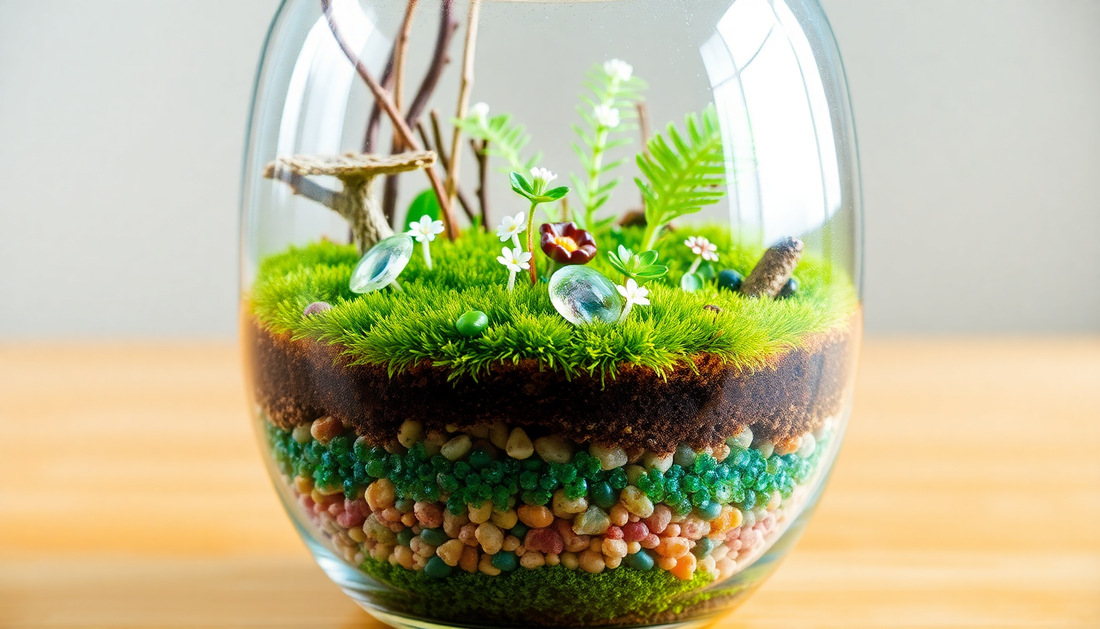
The Ultimate Guide to Choosing the Perfect Potting Mix for Your Terrariums
Terrariums have become increasingly popular in recent years, captivating plant enthusiasts and home decor enthusiasts alike. These miniature gardens, enclosed in glass containers, offer a unique and low-maintenance way to bring the beauty of nature into your living space. However, one of the most crucial elements in creating a thriving terrarium is the potting mix you choose.
In this comprehensive guide, we'll explore the key factors to consider when selecting the best potting mix for your terrarium, ensuring your plants thrive and your indoor garden flourishes.
Understanding the Unique Needs of Terrarium Plants
Terrariums are a unique ecosystem, where plants are grown in a confined, closed environment. This environment differs significantly from traditional outdoor gardens, and the potting mix you choose must cater to the specific needs of terrarium plants.
Terrarium plants typically require a well-draining, lightweight soil that can retain moisture without becoming waterlogged. They also need a substrate that provides the necessary nutrients to support their growth, while maintaining the right balance of air circulation and water retention.
Choosing the Right Potting Mix Ingredients
When it comes to selecting the perfect potting mix for your terrarium, the ingredients you choose can make all the difference. Here are some of the key components to look for:
Sphagnum Moss
Sphagnum moss is a popular choice for terrarium potting mixes. It is a natural, lightweight material that helps retain moisture while allowing for proper drainage. Sphagnum moss also helps to regulate the pH levels in the soil, creating an ideal environment for many terrarium plants.
Perlite or Vermiculite
These lightweight, porous materials are essential for improving soil aeration and drainage. They help prevent soil compaction and ensure that your plants' roots have access to the oxygen they need to thrive.
Activated Charcoal
Activated charcoal is a valuable addition to terrarium potting mixes. It helps to filter the water, removing impurities and preventing the buildup of harmful bacteria or algae.
Organic Matter
Incorporating organic matter, such as compost or well-rotted bark, can provide essential nutrients for your terrarium plants. This helps to support healthy growth and vibrant foliage.
Slow-Release Fertilizer
A small amount of slow-release fertilizer can be added to the potting mix to ensure your plants receive a steady supply of nutrients over time. This helps to maintain the optimal balance in your terrarium's ecosystem.
Preparing Your Terrarium Potting Mix
Once you've selected the right ingredients, it's time to prepare your terrarium potting mix. Here's a step-by-step guide:
- Start with a base of sphagnum moss, which will help retain moisture and regulate the pH levels.
- Add perlite or vermiculite, aiming for a ratio of around 30% to 50% of the total mix.
- Incorporate a small amount of activated charcoal, typically around 5% to 10% of the mix.
- Add your organic matter, such as compost or well-rotted bark, making up around 20% to 30% of the mix.
- If desired, mix in a small amount of slow-release fertilizer, following the manufacturer's instructions.
- Gently mix all the ingredients together until you have a well-blended, lightweight potting mix.
Maintaining the Perfect Terrarium Potting Mix
Caring for your terrarium's potting mix is an ongoing process. Here are some tips to keep your soil healthy and your plants thriving:
Monitoring Moisture Levels
Regularly check the moisture levels in your terrarium and adjust your watering routine accordingly. Avoid overwatering, as this can lead to soil compaction and root rot.
Replenishing Nutrients
Over time, the nutrients in your potting mix will be depleted. Consider adding a small amount of slow-release fertilizer or compost to replenish the soil's fertility.
Preventing Soil Compaction
Gently stir the soil periodically to prevent compaction and ensure proper air circulation around the roots.
Addressing pH Imbalances
If you notice your plants struggling, test the soil's pH levels and make adjustments as needed, such as adding limestone to raise the pH or sulfur to lower it.
By following these guidelines and choosing the right potting mix for your terrarium, you'll be well on your way to creating a thriving, low-maintenance indoor garden that brings the beauty of nature into your home.
Conclusion
Selecting the perfect potting mix is a crucial step in creating a successful terrarium. By understanding the unique needs of terrarium plants and choosing the right ingredients, you can ensure your miniature garden flourishes and provides you with endless enjoyment. Remember to monitor your soil's health, adjust as needed, and let your terrarium's natural beauty shine.
Happy gardening!






No comments